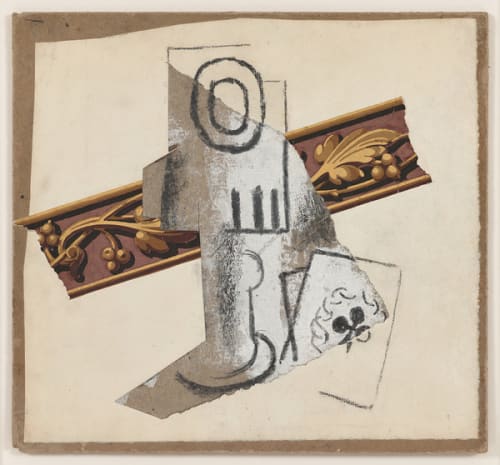Gouache, black crayon and paper collage on board
Pablo Picasso Verre et Carte à Jouer, 1914 Gouache, black crayon and paper collage on board 10 ¼ x 11 inches 26 x 27.9 cm Originating with Georges Braque and Pablo Picasso in 1907, Cubism was the idea that art should deter from nature in its execution. Instead of perspective, modeling and foreshortening, the idea of cubism formed around emphasizing two-dimensionality on canvas by faceting the image and rebuilding it based on shadows and various vantage points. Further advancement of Cubism came around 1912, when Picasso started making paper collés transitioning Analytic cubism to Synthetic cubism. Essentially, paper collés were relief sculptural compositions made solely from overlaying various pieces of paper. Working from assemblages and constructions, Picasso and Braque sought to simplify and flatten the actual sculptural work. In essence, these paper collés served as a middle ground between the canvas and the sculpture. In “Verre et Carte à Jouer,” Picasso takes a slip of gray paper, most likely leftover form an existing work, and overlaps it onto scroll of ornate vine paper. Either gesso or white paint is added to the original gray slip of paper. Lastly Picasso uses hard black crayon markings to add some depth to the entire composition. 
